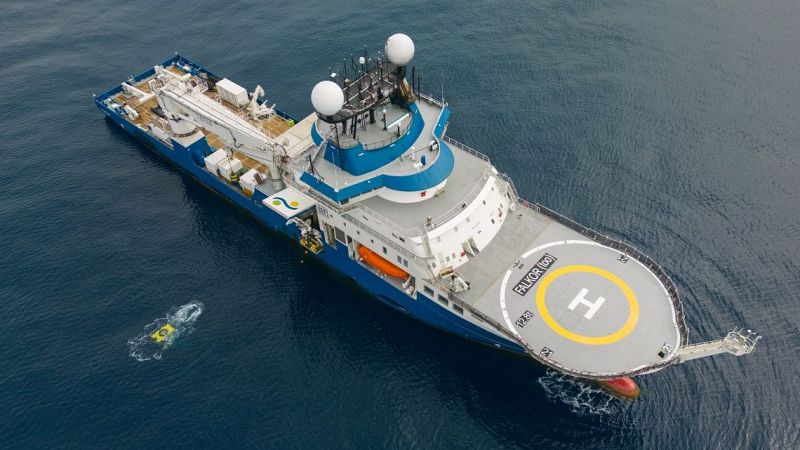Argentina's Deep-Sea Livestream Sparks Pride and Protests Over Science Funding Cuts

A Deep-Sea Discovery Captivates Argentina
Transparent-faced fish drift through dusky waters. Snow-like flecks of dead plants sift down from the world above. Soft sponges peek through the soot of the seafloor. Only occasional mutters among marine biologists break the thick silence. This is the mysterious world beneath the South Atlantic, where a live stream of sea life has captured the imagination of many.
The researchers behind this remotely operated vehicle filming lifeforms 4,000 metres undersea shared their surprise with The Associated Press on Monday. They never expected their deep-sea expedition to become such a social media sensation. The video feed has attracted more than 1.6 million views a day on YouTube, dominated TV news broadcasts and even sparked a national conversation about the defunding of science in the country.
“It was a huge surprise for us,” said expedition leader Daniel Lauretta. “It’s something that fills our hearts because we want to spread the word.”
Unveiling the Hidden World Below
Outfitted with high-definition cameras and state-of-the-art sensors, the roving robot captures the enigmatic organisms of Mar de Plata's submarine canyon with exceptional clarity and detail for the first time. The region, where the warm current from Brazil meets the cold current coming up from the Falkland Islands, is known for its little-studied biodiversity.
In dives lasting around eight hours a day, the camera encounters an array of surprising creatures lurking in the inky depths off the coast of Buenos Aires: An orange starfish so bright it drew comparisons to Patrick of “SpongeBob SquarePants” cartoon fame, a sea cucumber viewers nicknamed “sweet potato”, and a deep-sea crab that looked like a hairy spider.
“The colours, the zoom capability – that really amazed me,” Lauretta said. “I think that feeling reached the public, too.”
A Growing Audience and a National Conversation
Often peaking at some 50,000 simultaneous viewers, the livestream from the deep-sea research vessel kicked off last week and runs until 10 August. Argentine researchers and American experts from the nonprofit Schmidt Ocean Institute Foundation use the vehicle to map the underwater gorge, collect samples and identify scores of new species at a depth below the reach of sunlight.
Here, scientists have only begun to scratch the surface when it comes to understanding marine life. Few viewers have been able to resist the impulse to anthropomorphise the featured life-forms, assigning zodiac stars to invertebrates and sharing social media quizzes along the lines of “Which deep-sea creature are you based on how you handle stress?”
“Argentines are very passionate about everything that happens in Argentina,” said Georgina Valanci, 40, her eyes fixed on floating translucent fish while crocheting on Monday. “I think it represents a bit of the pride that something like this is being done in our country.”
Funding Cuts and a Call for Attention
Most Argentine researchers on the expedition come from Conicet, Argentina’s leading scientific funding and research body. And the livestream is shining a light on the institute's work at a moment when its funding is under attack. President Milei has taken his bureaucracy-slashing chainsaw to Argentine research projects and grants, curbing science spending as part of a broader drive to eliminate Argentina’s chronic fiscal deficit and bring down inflation.
State-backed science organisations have lost 4,000 positions in the last year and a half, a combination of layoffs, frozen contracts and resignations over poor working conditions and low pay. Conicet suffered a 21 per cent budget cut in real terms last year. Salaries for Conicet researchers have lost 35 per cent of their value. Many warn that the measures are setting off a brain drain.
Seizing on the surge of public excitement about Conicet, researchers have called for a 48-hour nationwide strike on Wednesday to draw attention to their plight. Although Milei has not commented on the livestream, his allies have expressed disdain. “They should livestream an offshore drilling operation instead,” said Alejandro Álvarez, an official in Milei's government, referring to growing crude production in Argentina's Vaca Muerta shale formation, an oil boom that Milei hopes can help revive the nation's crisis-stricken economy.
“It's a beautiful process of wealth creation and natural resource exploitation that will make Argentina greater."
A Moment of Wonder
In the meantime, Argentines seem content to be mesmerised by orange starfish. The deep-sea exploration has not only captivated the public but also highlighted the importance of scientific research and the challenges faced by institutions like Conicet. As the livestream continues, it serves as a reminder of the beauty and mystery that lie beneath the ocean's surface, and the need to support and protect scientific endeavors.

Comments
Post a Comment